Beneteau First 210 Tech Notes
Title: Rigid Vangs
Updated June 6, 2005
Wm. Doug McCance writes:
I've rigged up a topping lift for my F-210. I use the second reefing
line in the boom to connect a boom topping lift and bring the control
back to the cockpit and I'm pretty pleased with this arrangement, But:
Does anyone use this "Boomkicker" advertised on www.beneteauowners.net
on SALE till monday ($139.46)? They advertise "less weight and
windage aloft; opening the leech in light air for a faster sail shape
and more speed; safer reefing; Easy to install; etc. etc."
JGreer writes:
MMmmm.. Boomkicker. Love mine. Wonderful device.
ICornell writes:
My crews' heads really
appreciate it, especially when reefing in +20kts! To install it, I
also had to shorten the rods slightly and relocated the kicker to be
further out along the boom.
Hervé Floch writes:
I installed a boomkicker two years ago, I am happy with it, it is easy
and secure to reef
and handle the sail. It is also easy to install, just 3 holes in the boom.
Note that you need to shorten the rods (careful about 3-4 centimeters),
otherwise it is too powerful.
A few other 211 in the area also use it.
Chris Coward writes:
Hi Jay, please find attatched pictures of the Spinlock Powervang installation on" Sarnia".
The mast "Toggle" is a Spinlock item but the boom fitting was custom made.
The boom is now supported when the main is raised or lowered and the leech
of the sail is very easily adjusted for optimum sail shape.
It is an expensive addition but easily justified if you sail short handed frequently.
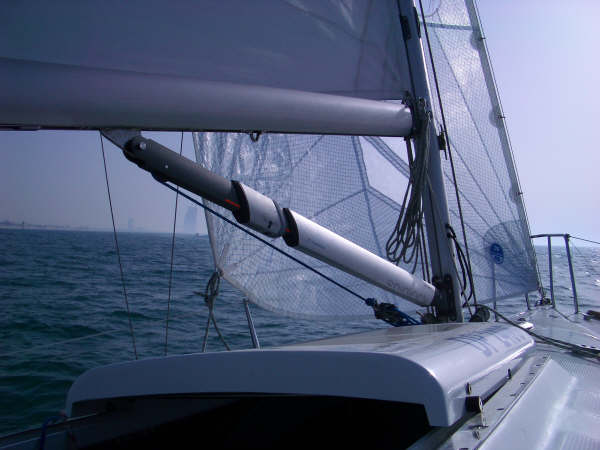
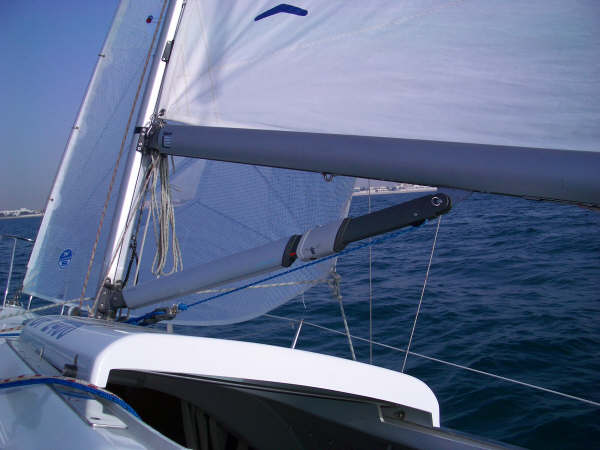
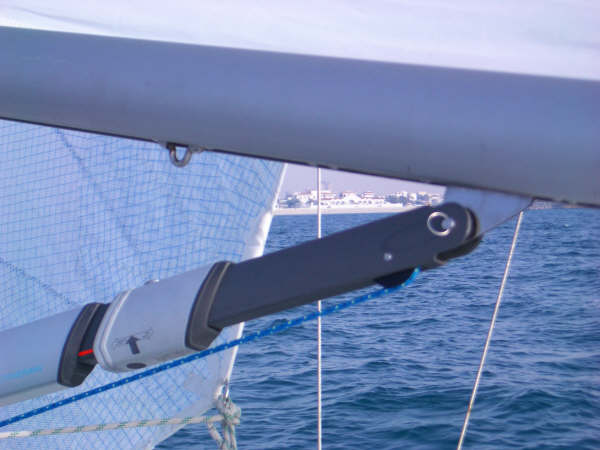
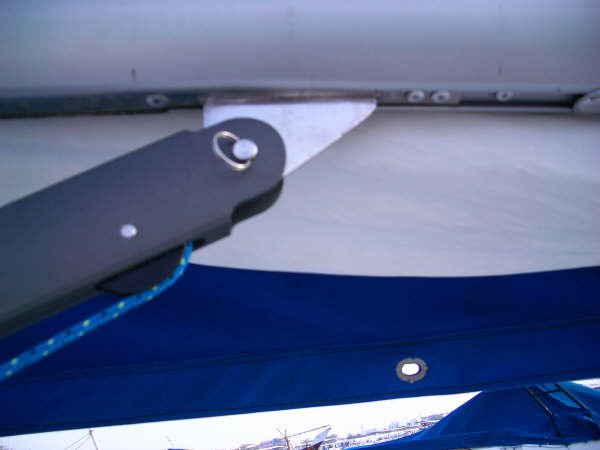
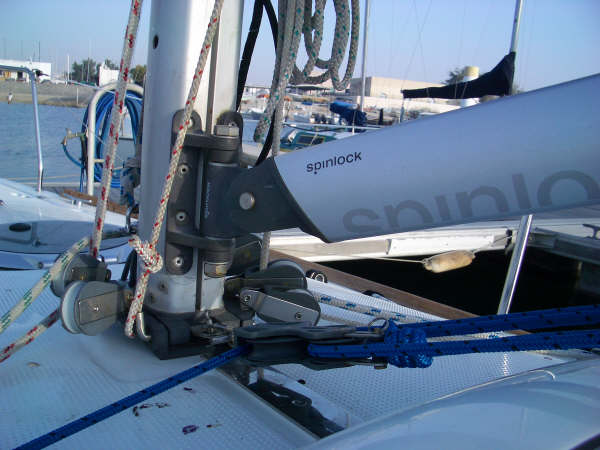
Mike Beesley writes:
Fitting Barton Boomstrut to Beneteau 211
My 211 came without a topping lift so I decided to fit a solid vang (kicker).
This would enable me to raise, lower and reef the mainsail without a topping lift or getting the crew to hold the aft end of the boom. There are a number of different makes of solid kicker, most using a spring or pressurised strut, these are quite relatively high priced and can suffer expensive failure such as loss of gas. The Barton Boomstrut is, as far as I know, the cheapest to buy and unique in that it uses two fibreglass rods fixed side by side to act as the spring. These cannot corrode and are unlikely to break so, once fitted, the system should last indefinitely without requiring maintenance or replacement of failed components.
The existing rope vang remains in place aft of the Boomstrut - the latter just provides support. If the rope vang and main sheet are freed off, the end of the boom is meant to rise 6 inches or so above horizontal. Should you wish to scandalise the mainsail or if for any reason the boom rises very high the strut releases automatically from its bracket without damage
There are 5 different sizes for boats up to 40 feet length. For the 211 I chose the second smallest, part no 44020, described as being for boats 6-7.5m length. In the UK this costs about £120.
The fibreglass rods as supplied are 970mm long and according to the manufacturers should not be shortened by more than 150mm, i.e. no less than 820mm, presumably to prevent the system from becoming too stiff. This meant that for my boat a bit of work was involved at the points where the strut attaches to the boom and the mast.
My 211 has a stainless steel tabernacle 215mm high so I could not attach the strut directly to the mast above the tabernacle as this would have meant shortening the fibreglass rods below the specified limit. I therefore drilled two 6mm holes low down in the tabernacle to take a pair M5 bolts securing the bracket. Each of the bolts (with a washer) could just be inserted from the mast side without fouling the aft foot of the mast. It is only necessary to lower the mast by about 45° to get your hand under the base of the mast to insert the bolts and washers. To drill the holes through the tabernacle I took the usual precautions :- punch the hole position first, use very slow drill speed with a cobalt drill bit, apply plenty of pressure and lubricant. In this way I managed to fit the bracket low down just above the vang attachment ring.
At the other end on the boom I had to move the existing rope vang attachment point back a couple of inches so that the Boomstrut bracket could be fixed as far aft as possible, again to keep the rod length within spec. Both the vang bracket and the Boomstrut bracket are secured to the boom by M5 setscrews after drilling 4.2mm holes and using an M5 tap. Monel rivets would be a stronger option and I may have to replace the screws with rivets later if there is any sign of the fitting parting company with the boom due to the very high loads on the vang.
Make sure you use a zinc chromate paste such as Duralac between s/s and aluminium parts to prevent future corrosion.
This all sounds complicated but I hope the photos make it clear and it is pretty easy given the right tools and a bit of care!
Finally to fit, lift the end of the boom right up, insert the boom strut, being careful not to loose the two little nylon washers and remove and trim the length of each rod so that the downward pull on the boom to make it horizontal is 10-20 lbs. My rods ended up being 34 1/2 ins (880mm) long. Take it easy, trim a little bit as a time as you cannot put any back on!
Barton has a good website at Barton marine.com
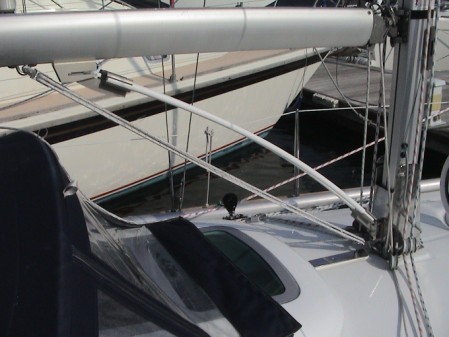
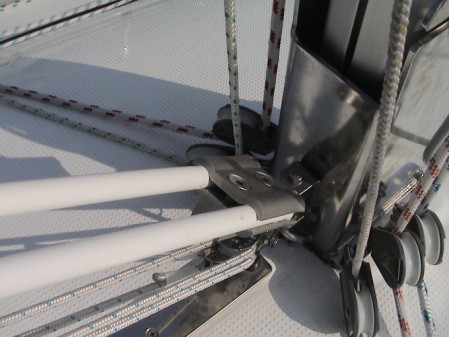
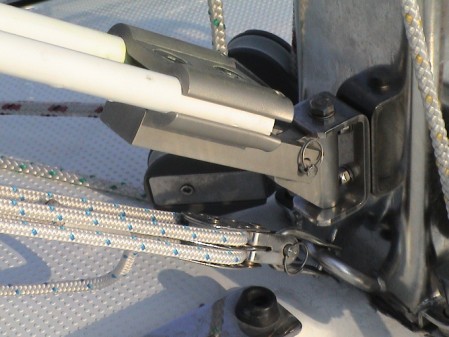
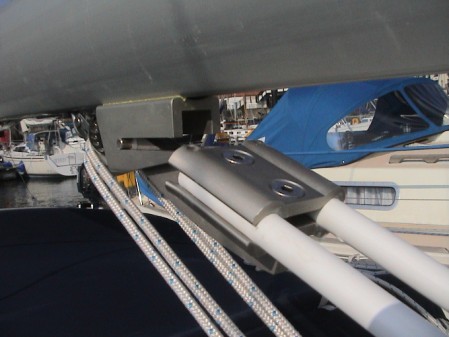
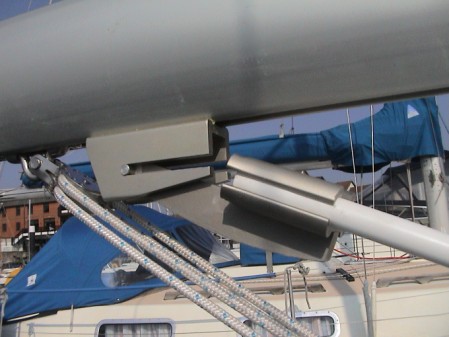
David Foster writes:
I have a Zpars Vang fitted to mine, works well and as Spars are
ZSpars all fittings match. see http://www.zsparsuk.com/vangs.htmlfor details. If you want some photos I wil be going down later today
and can get them for you.
Have put photos of the ZSpars Vang and in particular boom and mast
fittings on http://www.btinternet.com/~d.w.foster/
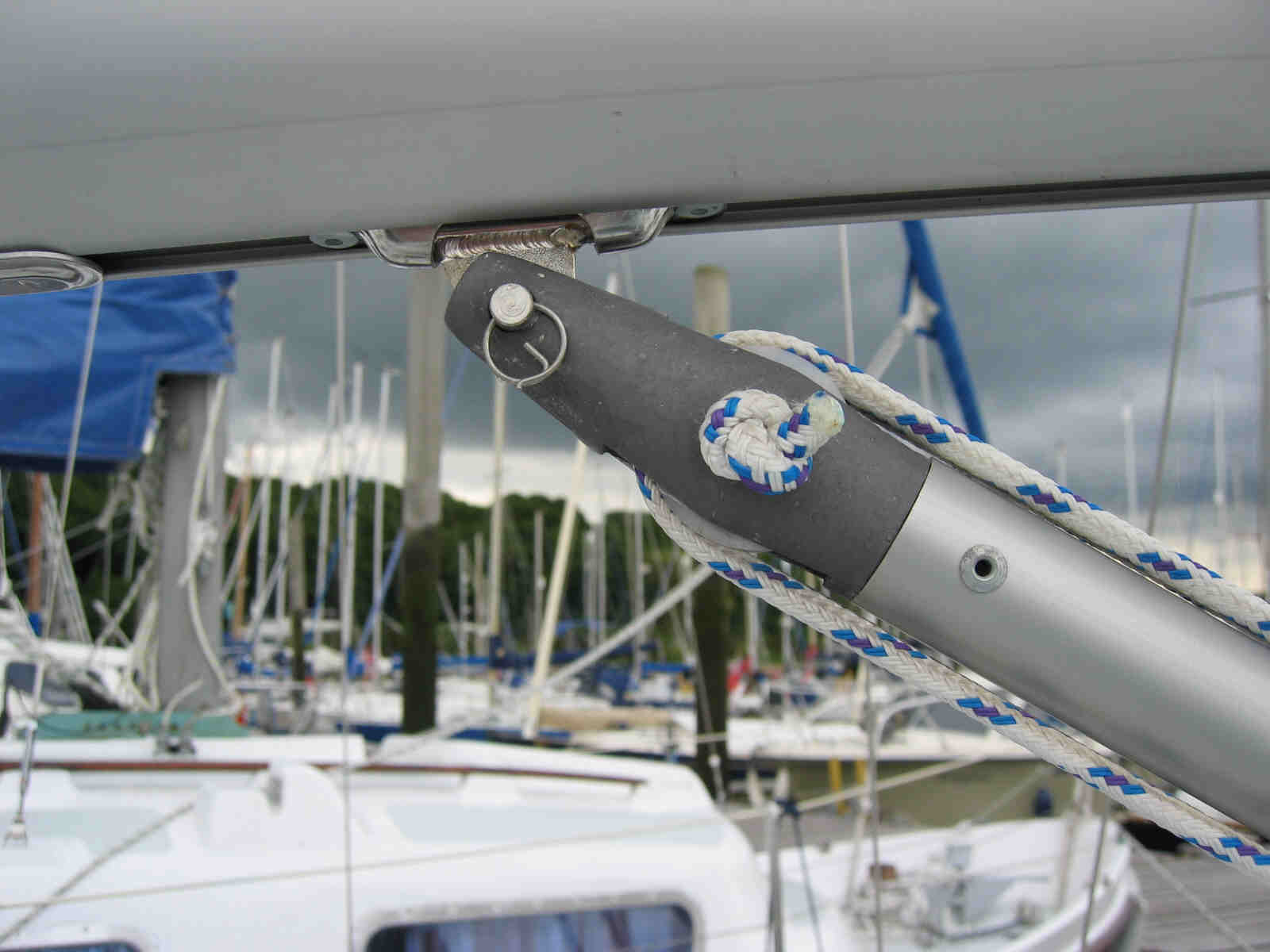
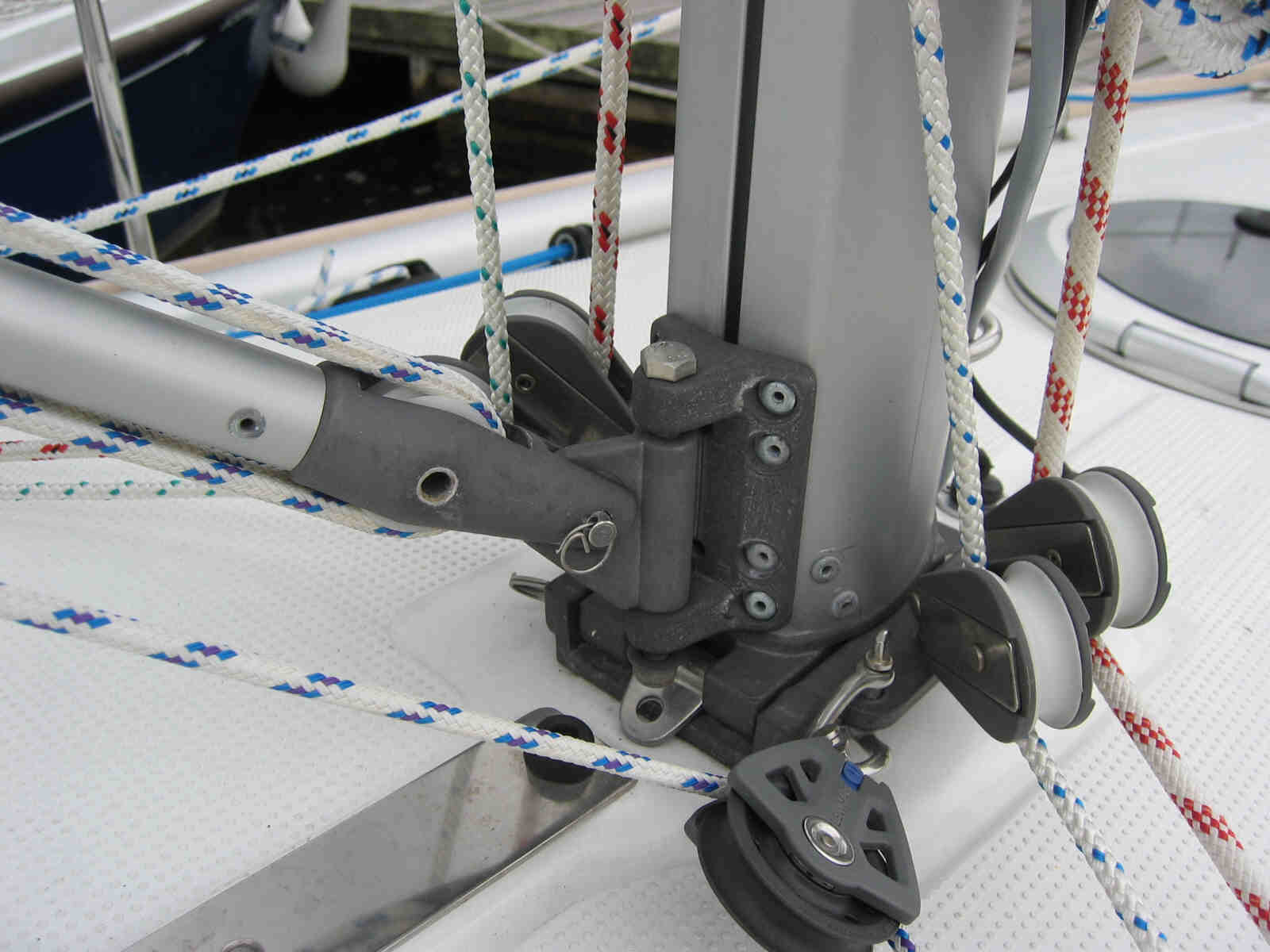
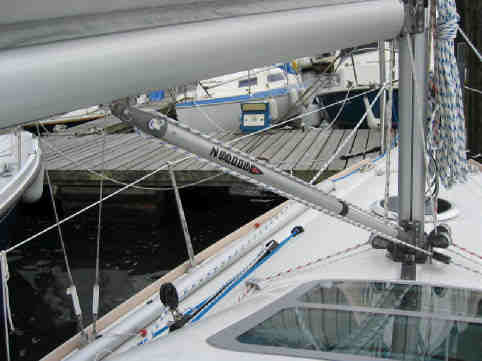
updated June 6, 2005
|